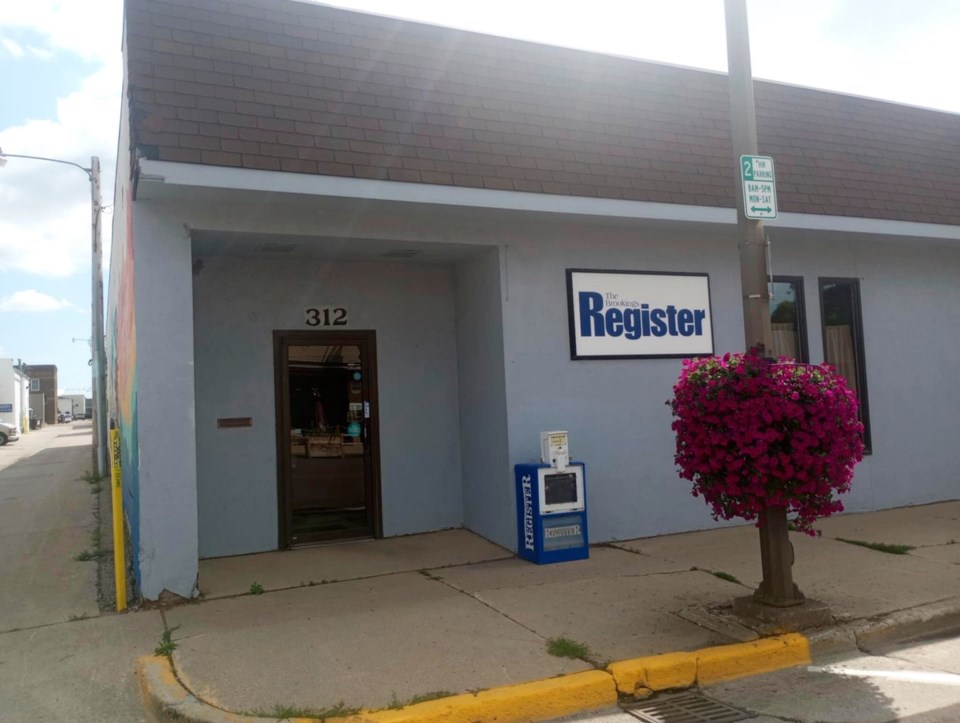SIOUX FALLS, S.D. (AP) — A dozen recently shuttered newspapers across Wyoming and South Dakota are set to publish again, after buyers stepped up within days to prevent the rural communities from becoming “news deserts” where little or no local media remains.
The swift rescues stand out in an industry where roughly two and a half newspapers disappear each week, according to a 2024 report from the Medill School of Journalism. The editor at one revived paper said his new owner saw ongoing profitability, while other outlets will be grabbed by publishers motivated by a sense of civic duty.
“It’s a little overwhelming, to be honest,” said Kayla Jessen, general manager of the Redfield Press, one of the rescued papers in South Dakota. “We’re all excited that we can bring news back to the community again.”
The turnarounds happened quickly. Illinois-based News Media Corporation announced on Aug. 6 it was immediately closing 31 outlets in five states because of financial problems. In less than two weeks, a publishing group in Wyoming said it would buy eight papers in the state, while a company in North Carolina said it would purchase four newspapers in South Dakota. Both buyers say all staff will be offered a chance to return.
The fate of other papers in Arizona, Illinois and Nebraska remains unclear.
After the closures, journalists and their communities scrambled for options to save the publications. In addition to regional news, many of the papers serve as their towns' official outlet for legal notices.
Rural areas often don't have local radio or TV stations, said Benjy Hamm, director at the University of Kentucky’s Institute for Rural Journalism and Community Issues. That can leave a lone newspaper as the only media outlet in the area.
"If it goes out, it has a significant impact on the community itself, not just the media,” Hamm said.
The publishers in Wyoming said they stepped in because they couldn't imagine more newspapers going dark in their state.
“We believe in the importance of a newspaper in a community,” said Jen Hicks, co-publisher the Buffalo Bulletin. “We know that in communities without newspapers, that civic engagement goes down and specifically, voter participation goes down, which is a really tangible way to see the decline in civic life.”
Jen and her husband Robb Hicks said they teamed up with Rob Mortimore, president of Wyoming Papers, Inc., to enter into a purchase agreement with News Media Corporation for its eight publications in the state. Hicks declined to share how much they'll pay for the newspapers.
In South Dakota, Benjamin Chase, managing editor of the rescued Huron Plainsman, said nearly a dozen offers came in to purchase one, two or all four of the closed newspapers. Champion Media, the North Carolina-based company, ultimately struck the deal.
"This was really an ideal situation because Champion works a lot with community and local papers,” the editor said, adding that every staff member was invited back.
Champion Media did not return requests for comment.
Chase credits buyers' interest to the fact that the South Dakota papers have significant readership, with a combined circulation of around 10,000. The Brookings Register covers a town of nearly 25,000 people that lost its radio station last year but is home to the largest university in the state.
“This is a group of papers you’re going to immediately have audience for, and all of them are profitable and working to keep costs down,” Chase said. The Huron Plainsman and Brookings Register, which were previously dailies, will now have a print edition only two days a week.
Hamm, the professor, said it’s rare to find such speedy commitment to reviving newspapers. “It occurs, but it’s a small number of places that actually have people step forward,” he said.
Chris Kline, president of the Arizona News Media Association, said the Arizona papers are currently exploring options for local and out-of-state ownership.
Sarah Raza, The Associated Press


